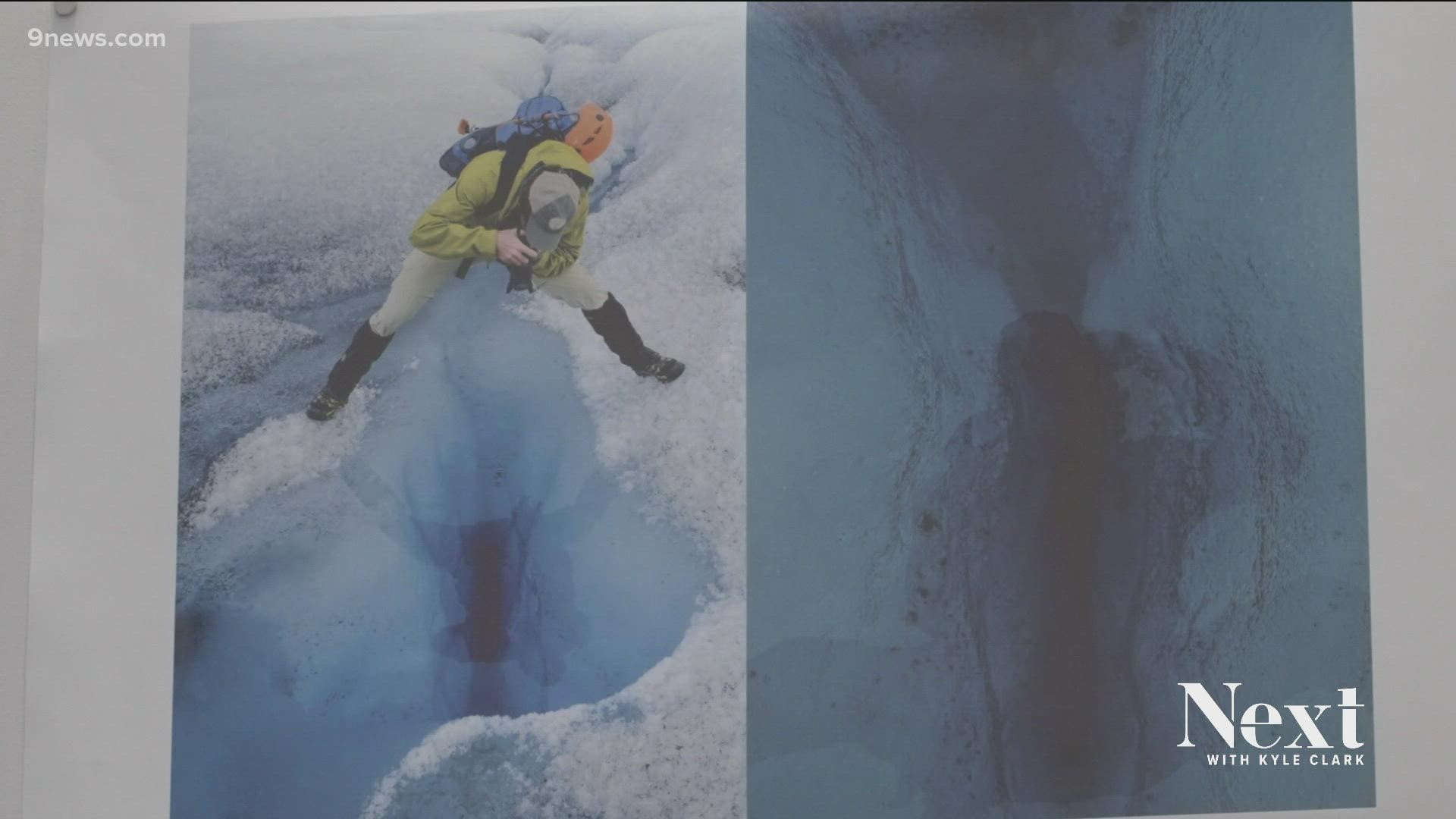BOULDER, Colo. — Glacial ice is melting, and University of Colorado PhD graduate Chris Dunn wants you to feel what it's like to be on one of these massive sheets of ice.
"I wanted to bring photography and focus on the beauty of the ice, and focus on what it's really like to be there," he said.
His project really is about the experience.
"It's deliberately not a climate change awareness exhibit," he said. "That's been done a lot and it's really important."
He wants you to feel the glacier, like he felt it on his expedition to Greenland.
The exhibit is on display at the Jerry Crail Johnson Earth Sciences and Map Library at the University of Colorado Boulder. It starts on the ground floor of the library, at the top of the glacier. As you descend the stairs, you're surrounded by images of glacial interiors. At the bottom, you pop out to two video screens showing ice melt hitting the ocean.
"It's really mind-blowing, so I wanted to convey some of that awesomeness," he said.


The project and the library are a solid match, says the library's map curator and metadata projects manager, Naomi Heiser.
"We have exhibits regularly that have to do with the collections we have," Heiser said. "We have a giant map collection and lots of the maps have to do with geo-sciences, also."
Dunn's Greenland trip was funded by NEST Studio for the Arts at the university.
"It’s intended to look at the way artists and scientists can collaborate," Joanne Guillery said. She's a manager at NEST.
Guillery said NEST projects usually involve an artist and a scientist, but because of COVID-19, Dunn was mostly on his own.
"He took so many photos and made so many videos that it was difficult to get it together," she said. "The photos are beautiful."
Dunn did have help from two PhD students, though. One worked on ocean temperatures and the other did elevation mapping.
"I'm mostly the artist, but I do bring in a pretty good heap of academic knowledge," Dunn said.
"Sensing Ice Explorations of Knowing Nature" is open to the public.

